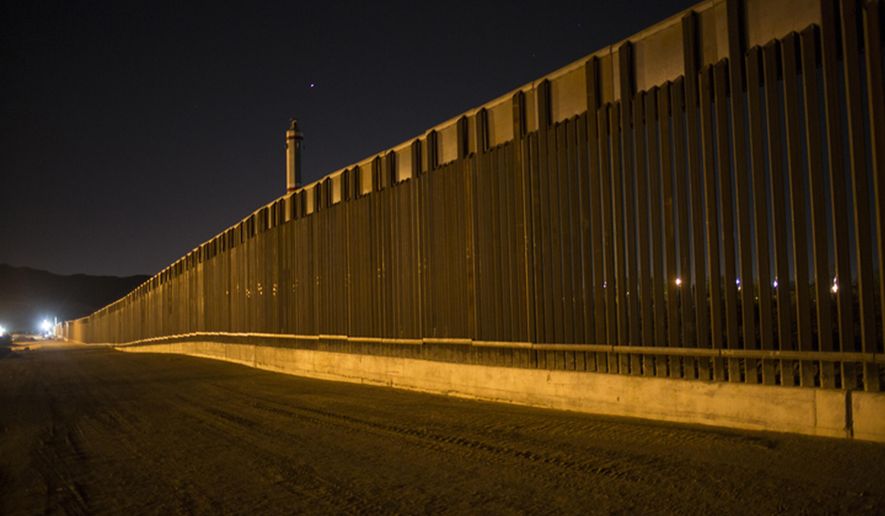The steel bollard border fence President Trump is now talking about building is not impenetrable, but it is the best design available and will slow down immigrants who are trying to cross the border illegally, border agents say.
It gives agents visibility into Mexico, meaning they have more of a chance of chasing off people attempting to cut through the fence. And it was tougher to breach than other fencing, according to Chris Judd, who was part of the Border Patrol’s last big round of fence-building a decade ago.
“In my opinion, hands-down, the best,” he told The Washington Times.
Questions about fencing efficacy rose Thursday after NBC reported that a steel wall prototype built in 2017 as part of Mr. Trump’s wall-design contest were breached by saw during testing.
All eight prototypes, including four concrete designs Mr. Trump was particularly interested in, were put through tests that included trying to punch holes in them and to scale them. The goal was to have it take a minimum of 30 minutes — and at best, four hours — to cut a 12-inch hole.
The prototypes were also evaluated for ease of construction and aesthetics.
A Government Accountability Office report in August said none of the eight designs was field-ready, and they would all need modifications to be made operational.
Border Patrol leaders say they’re using the designs to learn lessons about future construction but don’t have plans to put any of them into use.
Mr. Trump, asked about the breaches Thursday, first claimed the design belonged to the Obama administration — though it was built as part of his prototype tests.
He then said anything can be breached.
“There is nothing that can’t be penetrated, but you fix it,” he said.
Fixing breaches was part of Mr. Judd’s job.
He said agents got to know what worked and what didn’t. Bad designs included what was known as “landing mat” fence, which repurposed old surplus metal plates used by the military to create landing strips. The Border Patrol stood the plates on end as fencing.
They were not see-through, creating a new danger to agents from ambush on the Mexican side, and they were also easy to cut through.
“A matter of 10 minutes, max,” Mr. Judd said.
He said wire-mesh fencing, another option that has been used on the border, was see-through, but also easy to cut.
The bollard-style fencing was far tougher to breach when it was built with concrete fillings inside steel casings. And the bollards were spaced inches apart, giving visibility into Mexico.
Mr. Judd said fencing doesn’t stop everyone, but it does funnel people, making the flow more predictable and giving agents a better chance to catch those who do try to cross.
“Anybody who has any thought in their mind, any concern over border security, a fence is critical for us to be able to properly secure the border,” Mr. Judd said. “The barrier’s huge. We can’t be everywhere all of the time. It’s just simply not possible.”
Democrats who oppose physical barriers say they would prefer sensors, drones and radar to spot migrants trying to cross the border illegally. House Speaker Nancy Pelosi on Thursday called that a “technological wall.”
Mr. Judd, though, told The Washington Times last week that agents need more than sensors and drones.
“Things like that are great but there’s no substitute for agents on the border, and that barrier is what allows us to be able to patrol those areas and see where people may have crossed,” he said.
• Stephen Dinan can be reached at sdinan@washingtontimes.com.




Please read our comment policy before commenting.